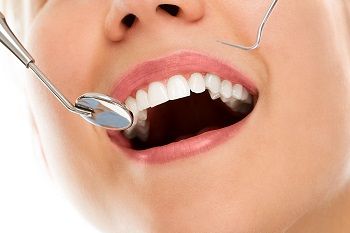Benefits of Composite Fillings
2023-03-28
Composite fillings are a popular dental treatment that offers several benefits compared to traditional metal fillings. Composite fillings are both aesthetically pleasing and functionally productive. This article discusses the benefits of composite fillings, including improved durability, reduced sensitivity, and the ability to preserve more of the natural tooth structure.
If you've ever had a cavity, chances are you've received a filling to restore the tooth and prevent further decay. But not all fillings are created equal - while metal fillings were once the go-to option for restoring teeth, composite fillings have emerged as a popular alternative in recent years.
But what are composite fillings, and why are they becoming popular among dental patients? Read on to learn more about composite fillings and see if you are a candidate for them.
"Composite fillings are the most commonly used type of dental filling material in the United States, accounting for approximately 85% of all fillings placed. Composite fillings have a success rate of over 90% after five years and over 80% after ten years".
What are Composite Fillings?
Composite fillings are a popular dental treatment to restore decayed, damaged, or broken teeth. Unlike traditional metal fillings, composite fillings use a mixture of tooth-colored resin and glass or quartz filler. This resin material is robust and durable and has the advantage of blending in with the natural color of your teeth, making them a popular cosmetic option.
Composite fillings suit patients with mild to moderate tooth decay or damage. It helps fix chipped or cracked teeth, close gaps between them, and even reshape them. In addition, it helps replace old, worn-out metal fillings, which may have started to break down or cause sensitivity over time.
Who is a Candidate for Composite Fillings?
First, the dentist will thoroughly examine the patient's teeth, looking for signs of decay, damage, or wear. If he determines that a filling is necessary, they will then evaluate the size and location of the cavity or injury to determine whether a composite filling is appropriate.
Patients who are good candidates for composite fillings have teeth that are strong enough to support the filling material, as well as healthy gums and surrounding teeth. Patients with severe decay, damage, or weak or brittle teeth may not be suitable candidates for composite fillings. These fillings require a certain amount of healthy tooth structure to adhere to and may need more structural support for weaker teeth.
In addition to these general criteria, there are certain situations in which composite fillings may be especially beneficial. For example, composite fillings are often recommended for front teeth, as they match the tooth's natural color, making them virtually indistinguishable from the surrounding teeth. They may also be a good option for patients allergic to metal, as composite fillings are metal-free.

Overall, composite fillings offer several advantages over traditional metal fillings, including improved durability, reduced sensitivity, and a more natural-looking appearance. With proper care and maintenance, composite fillings can provide long-lasting results, helping to restore your smile and improve your oral health.
If you're experiencing tooth decay or damage or want to replace old metal fillings, talk to your dentist about whether composite fillings may be a good option.
Benefits of Composite Fillings
Composite fillings offer several benefits over traditional metal fillings. These include the following:
- Better Aesthetics
Composite fillings have better aesthetics, making them virtually indistinguishable from the surrounding teeth. It means composite fillings offer a more natural-looking restoration option than metal fillings, which can be noticeable when you smile or speak.
- Less Drilling
Composite fillings require less drilling and removal of healthy tooth structures than metal fillings. The dental composite filling procedure is less invasive and can be less uncomfortable for patients.
- Bonds to the Original Tooth
Composite fillings require less removal of healthy tooth structure than metal fillings, as they bond directly to the tooth. Composite fillings can help to preserve more of the natural tooth structure, which is essential for maintaining the long-term health and strength of the tooth.
- Durable
Durability is one of the main benefits of composite fillings. Compared to traditional metal fillings, which can weaken and break down over time, composite fillings are much more resistant to wear and tear.
Composite fillings can withstand the forces of biting and chewing and are less likely to crack or chip. In addition, composite fillings are bonded directly to the tooth, creating a tight seal that helps to prevent bacteria and decay from getting inside.
- Metal-free
Composite fillings are an excellent option for patients allergic to metal, as they are entirely metal-free. It is suitable for patients with metal allergies or sensitivities who can still receive effective dental treatment without adverse reactions.
- It helps Fix Chips or Cracks
Composite fillings can treat many dental issues, including cavities, cracks, chips, and gaps between teeth. It makes them a versatile treatment option that can address multiple dental concerns.
- Lower Chances of Tooth Sensitivity
Composite fillings are less conductive than metal fillings and less likely to cause sensitivity to hot and cold temperatures. It can be especially beneficial for patients who have sensitive teeth or who experience discomfort with metal fillings.
- Replace Older Fillings
Composite fillings help replace other types of fillings. Many patients choose to replace their old metal fillings with composite fillings because of their many benefits, such as a more natural appearance, improved adhesion, and preservation of healthy tooth structure.
- Easy to Repair
Over time, composite fillings can become worn down or damaged and may need to be repaired or replaced to ensure their continued effectiveness in restoring the tooth. The repair process for composite fillings is typically quick and straightforward with a single visit to the dentist. It is a convenient option for patients with busy schedules or who prefer to minimize their time in the dental chair.

- Reduced Risk of Future Damage
Composite fillings are less likely to expand and contract with temperature changes than metal fillings, which can reduce the risk of future damage or fracture to the tooth.
What Happens During a Composite Fillings Procedure?
The dentist will first numb the area using a local anesthetic during a composite filling procedure. It helps to ensure that you're comfortable and pain-free during the process. Afterward, the dentist will use a dental drill to remove any decay or damaged areas of the tooth. He will then clean and prepare the site for the filling material.
The dentist will apply the composite material to the prepared area of the tooth in layers, using a special light to harden each layer as it's applied. After applying the filling material, the dentist will use a dental drill and other tools to refine the shape and ensure a proper bite. Afterward, the filling is polished to get a smooth finish, and you can resume normal activities immediately after the procedure.
Composite fillings are a safe and effective treatment option for restoring decayed, damaged, or broken teeth. They offer many benefits over traditional metal fillings, including a more natural appearance and improved adhesion to the tooth. The composite filling procedure typically takes an average of 30 minutes to an hour.
If you're considering a composite filling, talk to your dentist about whether this treatment is appropriate. They can evaluate your dental needs and recommend the best treatment options to meet your needs and goals.
How Long Does Composite Filling Last?
Composite fillings can last for many years with proper care and maintenance. While the lifespan of a composite filling can vary depending on factors like the size and location of the filling, most composite fillings last for at least five to seven years and often much longer.
Maintaining optimal oral hygiene habits to help ensure the long-term durability of your composite fillings. You should also avoid biting down on complex objects like ice or popcorn kernels, which can cause your fillings to crack or break.
Wrap Up
Composite fillings are a popular and effective treatment option for restoring decayed, damaged, or broken teeth. They offer many benefits over traditional metal fillings, including a more natural appearance, improved adhesion, and preservation of healthy tooth structure. If you're considering a composite filling, talk to your dentist about whether this treatment suits you.
Contact your dentist in Walnut Creek, Dr. Darvishzadeh at Walnut Creek Dental, to learn about the Benefits of Composite Fillings.
Resource:
Introducing Composite fillings
*This media/content or any other on this website does not prescribe, recommend, or prevent any treatment or procedure. Therefore, we highly recommend that you get the advice of a qualified dentist or other medical practitioners regarding your specific dental condition*
Subscribe To Our Newsletter
Get Updates And Learn From The Best